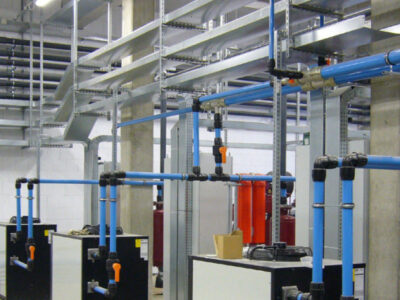5 Ways You Can Afford to Go Green
The Earth is a precious, yet fragile, planet. Humans rely on the Earth’s resources for survival, yet the way people live seems to be killing the planet. The effects of climate change are everywhere. It’s going to take some serious work to preserve and protect the planet.
That said, the price of going green can sometimes be high. Investing in renewable energy solutions, like solar panels or wind farms, can seem cost prohibitive when looking at starting costs. Refillable cleaning products and beauty supplies can cost more money upfront, especially if you try to make the shift all at once. While EVs offer long-term savings on fuel and maintenance costs, the initial purchase price of electric cars tends to be higher than that of traditional gasoline-powered vehicles.
If you’re not making millions, you might feel helpless in the fight against climate change. But don’t worry. There are still plenty of affordable ways to make a positive impact. Here are a few affordable options for reducing your carbon footprint — some can even save you money over time.
1. Consider Solar Power
As solar power is growing in popularity, it’s become more affordable. What once cost a premium now offers competitive pricing due to advancements in technology, increased manufacturing efficiency, and government incentives promoting renewable energy adoption. One of the most affordable options is solar leasing.
Multiple companies offer leasing programs that allow you to rent solar panels for a monthly fee. This can be great if you don’t have the upfront capital to invest in a solar system. And some states offer incentives for installing solar panels. For example, New York offers the NY-Sun incentive program, providing financial incentives and support for solar energy projects across the state. Switching your energy system could be even cheaper than you thought.
Community solar programs have been exploding in popularity, too. You can band together with your neighbors to reap the benefits of a solar system installed in a sunny location. This works even if you can’t install panels at home. Advancements in solar technology have made portable solar chargers and lights more accessible and affordable too. You can save money on your electric bill and help the planet.
2. Invest in Energy-Efficient Appliances
When shopping for new appliances, look for the Energy Star label. This is awarded to products that meet high energy efficiency standards set by the U.S. Environmental Protection Agency. Energy-smart appliances cut down on the amount of power they suck up. This reduces your carbon footprint, of course. But it can also lead to lower monthly utility bills over time.
In fact, investing in one energy-efficient refrigerator or dishwasher can reduce your home’s energy consumption by up to 15%. Of course, these appliances may initially have a higher price tag. But the long-term savings on your energy bills make them more than worthwhile.
When upgrading to energy-smart appliances, adopt a sustainable approach by gradually replacing your appliances as they reach the end of their lifespan rather than rushing out to replace perfectly functional ones. This approach prevents unnecessary waste and promotes responsible consumption habits. By replacing appliances only when necessary, you can make mindful choices that align with your budget and environmental goals.
3. Eat More Vegetarian Dishes
The meat industry is a big contributor to greenhouse gas emissions. It accounts for nearly 60% by some estimates. By opting for eating plants over animals, you can reduce your environmental impact and save money at the same time.
Eating vegetarian meals can save money in several ways. Plant-based ingredients tend to be more affordable than meat. Think about the cost of beans versus steak. Adopting a vegetarian diet often encourages home cooking as well, which can be significantly cheaper than dining out or purchasing pre-packaged meals. Finally, reducing meat consumption can lead to long-term health benefits, potentially lowering healthcare costs in the future.
It can be hard to cut meat out of your diet all together, so start with Meatless Mondays. It’s a movement that encourages people to go meat-free for one day a week. There are plenty of delicious and affordable vegetarian and vegan recipes available online. You might find that a hearty lentil stew or a flavorful vegetable stir-fry is your new favorite dinner. Plus, experimenting with new recipes can be fun!
4. Embrace Secondhand Shopping
Fast fashion is a major contributor to pollution and waste. So start looking for alternative ways to shop for clothing. Shop at thrift stores, participate in clothing swaps with friends, or check out online marketplaces like Poshmark and Depop. You can still be a fashion maven, yet your wallet and the planet will thank you. You’ll be giving a new life to items that might otherwise end up in the landfill, and you can get new pieces at a fraction of the cost.
Keep in mind clothing isn’t the only way to embrace the thrifting lifestyle. Furniture, electronics, books, and even kitchenware all await you. You can find these in excellent condition at thrift stores or online platforms that sell “pre-loved” items. As you browse through racks of clothing or search for that perfect vintage lamp or bookshelf, you’ll not only be saving money but also uncovering unique treasures and rich history.
5. Reduce Water Use
The average American household uses a few hundred gallons of water each day. Turning off the faucet can make a huge impact on the planet and your water bill. You might have to make a few small changes to your daily habits. This can mean taking shorter showers and only running the dishwasher when it’s full.
If you live in an older home, retrofitting low-flow WaterSense showerheads and faucets is another way to reduce water use. These fixtures restrict the flow of water while still getting you as clean as ever. Fixing any leaks in your home can also make a huge impact. A dripping faucet can waste hundreds of gallons of water per year, leading to skyrocketing water bills for you and an unnecessary strain on the environment.
Depending on where you live, adopting a rainwater collection system can be another effective strategy for reducing water waste and saving money. With strategically placed barrels or tanks, you can capture those precious droplets cascading from your roof. Then, you can put them to use for gardening, car washing, or any other non-potable needs. You’ll be saving water and lessening your dependence on public water supplies.
Go Green While Saving Some Green
There are hundreds of more ways to affordably go green. Why not make it a challenge to see how many eco-friendly habits you can adopt? By being conscious of your environmental impact and making smart choices, you’ll save money, of course. But you’ll also help to protect the planet for future generations. So, next time you’re browsing the store or going about your daily routine, remember these tips. Even one small step is a strong start toward a greener lifestyle.












